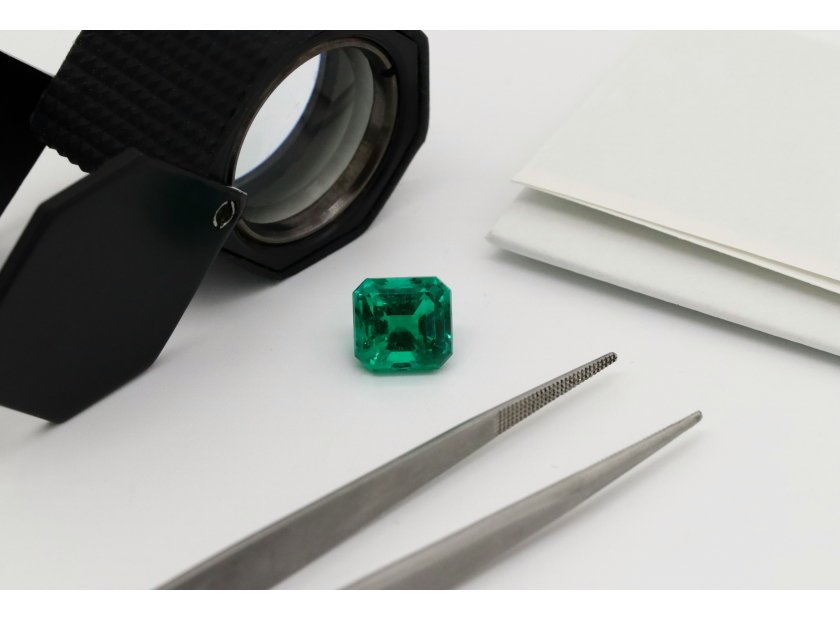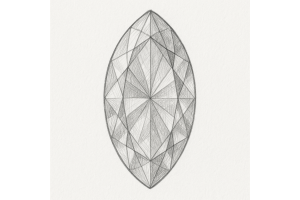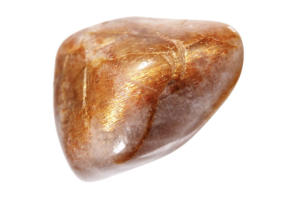GBP
/
GBP
/
Shipping to:
Currency:
Emerald vs Tsavorite: What’s the Difference Between These Green Gems?
When it comes to green gemstones, emeralds have long been the go-to choice.
However, tsavorite garnet has emerged as a vibrant alternative.
While both stones captivate with their lush green hues, they differ in several key aspects.
Let's delve into these differences to help you make an informed choice.
Emerald: The Classic Green Gem
Emeralds are a variety of the mineral beryl, distinguished by their rich green colour, which ranges from bluish-green to yellowish-green.
This captivating hue is primarily due to trace amounts of chromium and vanadium.
Historically, emeralds have been cherished for centuries, with notable sources including Colombia, Zambia, and Brazil.
One characteristic feature of emeralds is their inclusions, often referred to as "jardin" (French for "garden").
These internal features are common and, in many cases, accepted as part of the stone's natural charm.
However, they can affect the gem's clarity and durability.
To enhance their appearance, emeralds are frequently treated with oils or resins to fill surface-reaching fractures and improve clarity.
For those considering this gemstone for a special occasion, check out emerald engagement rings for timeless designs.
Tsavorite: The Vibrant Green Garnet
Tsavorite is a rare green variety of the garnet family, specifically a grossular garnet.
Discovered in the 1960s in Kenya near the Tsavo National Park (from which it derives its name), tsavorite is also found in Tanzania.
Its vibrant green colour is attributed to the presence of vanadium and sometimes chromium.
Unlike emeralds, tsavorites typically exhibit higher clarity with fewer inclusions, often appearing eye-clean.
They are rarely subjected to treatments, making them a natural choice for those seeking untreated gemstones.
Tsavorite's brilliance and fire are notable, thanks to its higher refractive index compared to emeralds.
If you're interested in unique designs featuring tsavorite, explore non-traditional engagement rings for inspiration.
Colour and Brilliance
While both gemstones showcase green hues, there are subtle differences:
- Emeralds: Often display a deeper, more saturated green with possible bluish undertones.
Their colour can be intense but may sometimes appear slightly muted due to inclusions. - Tsavorites: Exhibit a bright, vivid green that can range from yellowish-green to deep forest green.
Their higher refractive index imparts a lively sparkle, often making them appear more brilliant than emeralds.
For a selection of vibrant gemstone jewellery, consider browsing gemstone rings that highlight these stunning stones.
Durability and Hardness
Durability is a crucial factor, especially for jewellery intended for regular wear:
- Emeralds: Rank between 7.5 and 8 on the Mohs hardness scale.
However, their inherent inclusions can make them more susceptible to chipping or cracking, necessitating careful handling. - Tsavorites: Have a hardness of 7 to 7.5.
Despite being slightly softer, their lack of significant inclusions grants them better overall toughness, making them more resistant to breakage.
Rarity and Value
Both gemstones are prized, but their market dynamics differ:
- Emeralds: While historically esteemed and often commanding high prices, emeralds are more widely available than tsavorites.
High-quality emeralds, especially those with minimal inclusions and rich colour, can be particularly valuable. - Tsavorites: Are considered rarer than emeralds, especially in larger sizes.
Despite this rarity, they are generally more affordable than emeralds of comparable quality, offering excellent value for those seeking a unique green gemstone.
For those weighing their options between different gemstones, check out lab-grown diamonds vs gemstones for further insights.
Ethical Sourcing and Environmental Impact
Ethical considerations are increasingly influencing gemstone choices:
- Emeralds: Sourced from multiple countries, with Colombia being a primary supplier.
Mining practices vary, and some regions have faced scrutiny over environmental and labour concerns. - Tsavorites: Mined exclusively in East Africa, primarily Kenya and Tanzania.
The limited mining areas mean that sourcing can be more controlled, but it's essential to ensure that stones are obtained from reputable sources that adhere to ethical mining practices.
Care and Maintenance
Proper care can extend the life and beauty of both gemstones:
- Emeralds: Due to their inclusions and treatments, it's advisable to clean them gently using warm soapy water and a soft brush.
Avoid ultrasonic cleaners and exposure to harsh chemicals.
Store them separately to prevent scratches. - Tsavorites: Can be cleaned with warm soapy water and a soft brush.
They are generally safe to use with ultrasonic cleaners, but caution is always recommended.
As with all gemstones, storing them separately will help maintain their polish and prevent damage.
Frequently Asked Questions
Is tsavorite more expensive than emerald?
Generally, tsavorites are more affordable than emeralds of comparable quality.
However, high-quality, larger tsavorites can command premium prices due to their rarity.
Do tsavorites undergo treatments like emeralds?
Tsavorites are typically untreated, showcasing their natural clarity and colour.
In contrast, emeralds often undergo treatments to enhance their appearance.
Which gemstone is better for daily wear?
Tsavorites, with their higher clarity and toughness, are more suited for daily wear compared to emeralds, which require more cautious handling due to their inclusions.
Are tsavorites rarer than emeralds?
Yes, tsavorites are considered rarer than emeralds, especially in larger sizes.
Despite this, they remain less known in the mainstream market.
Can emeralds and tsavorites be used together in jewellery designs?
Absolutely!
Combining both gemstones can create a stunning contrast of green hues, adding depth and interest to jewellery pieces.








